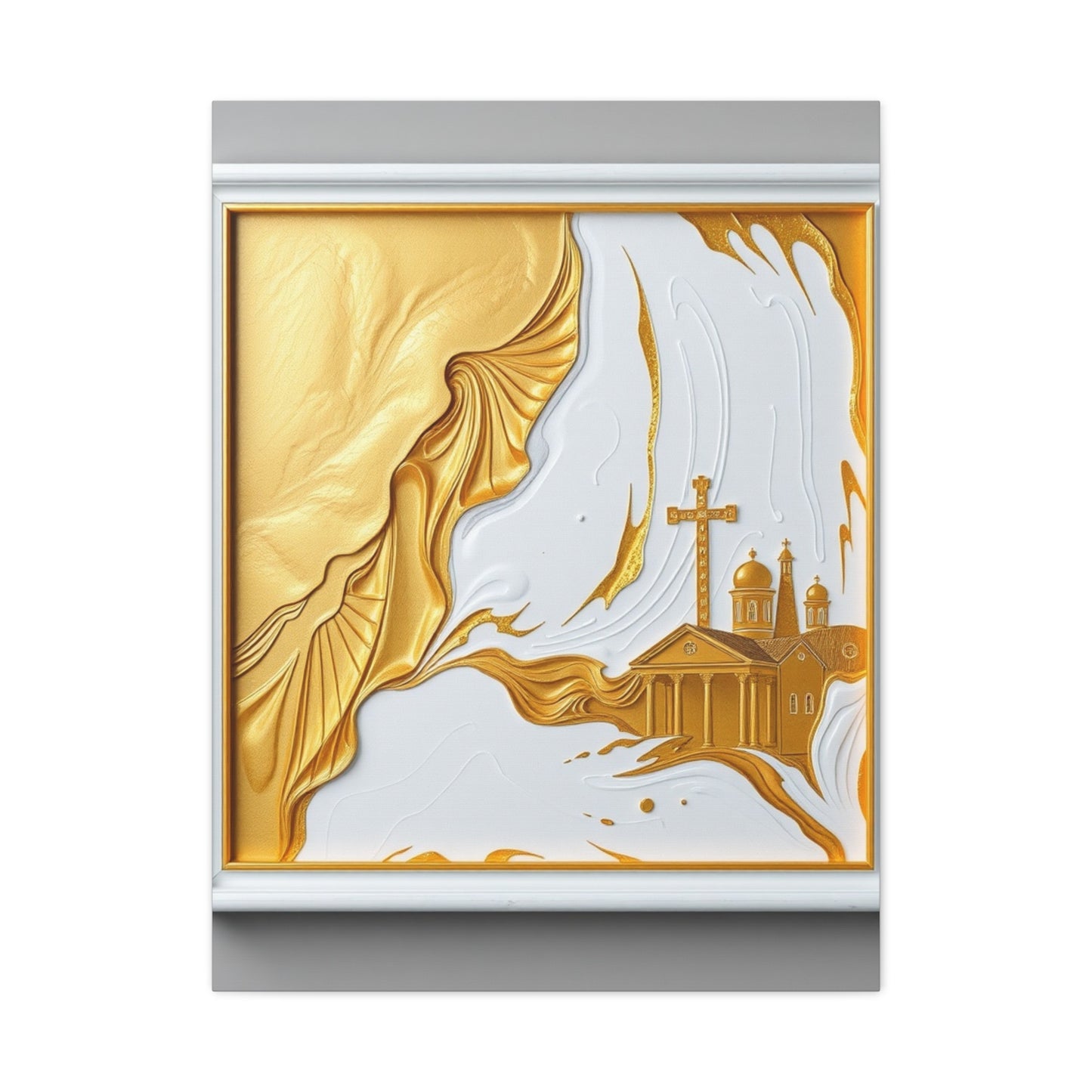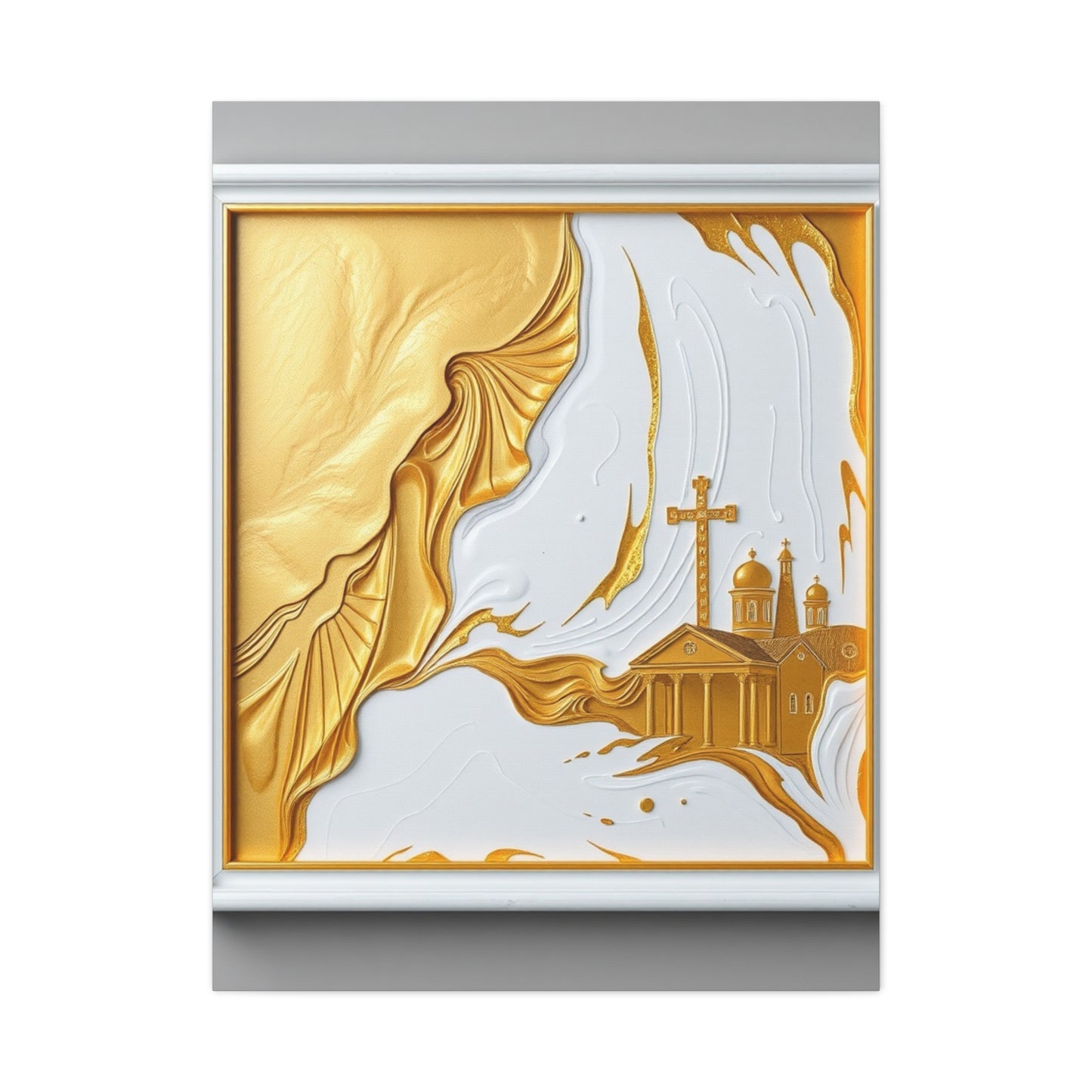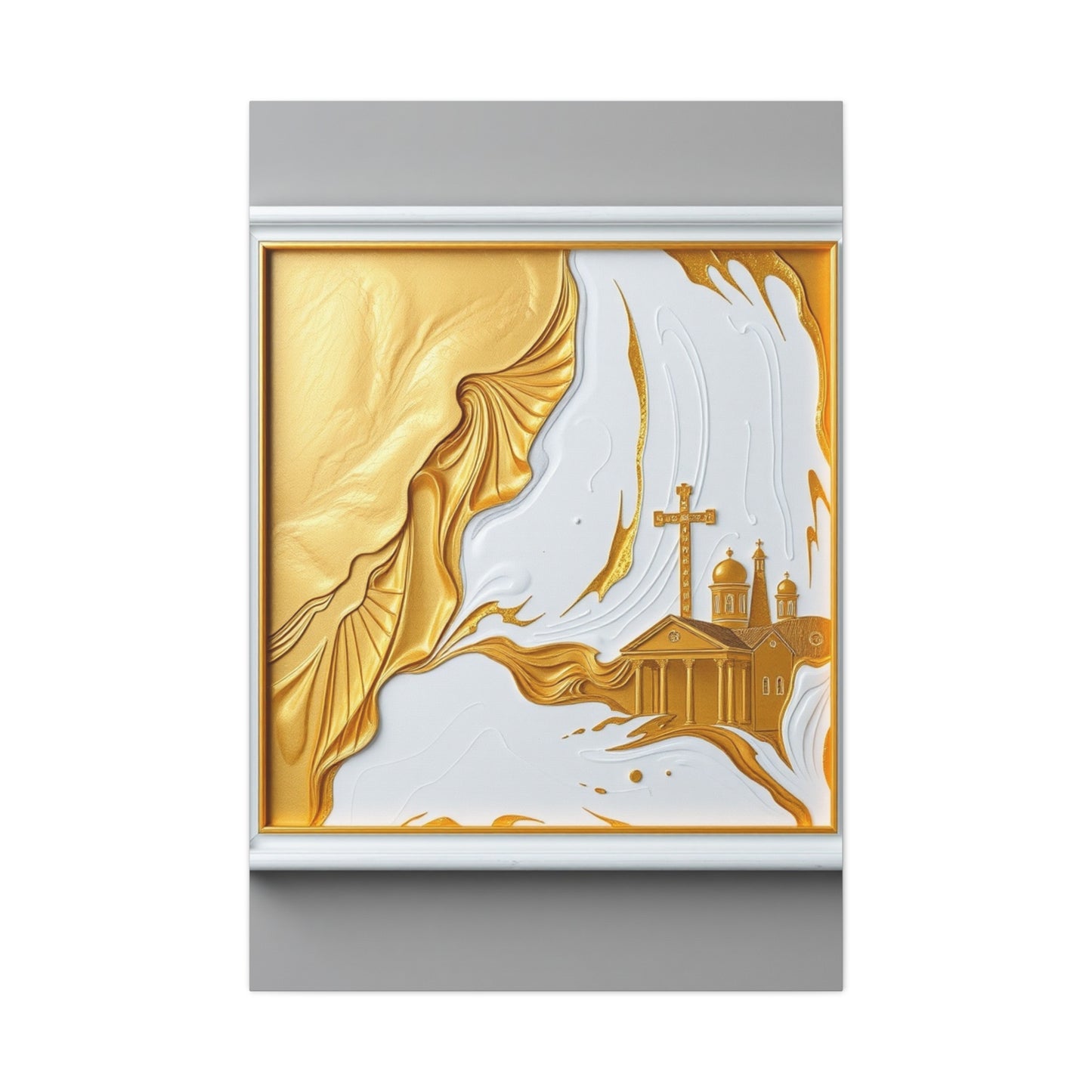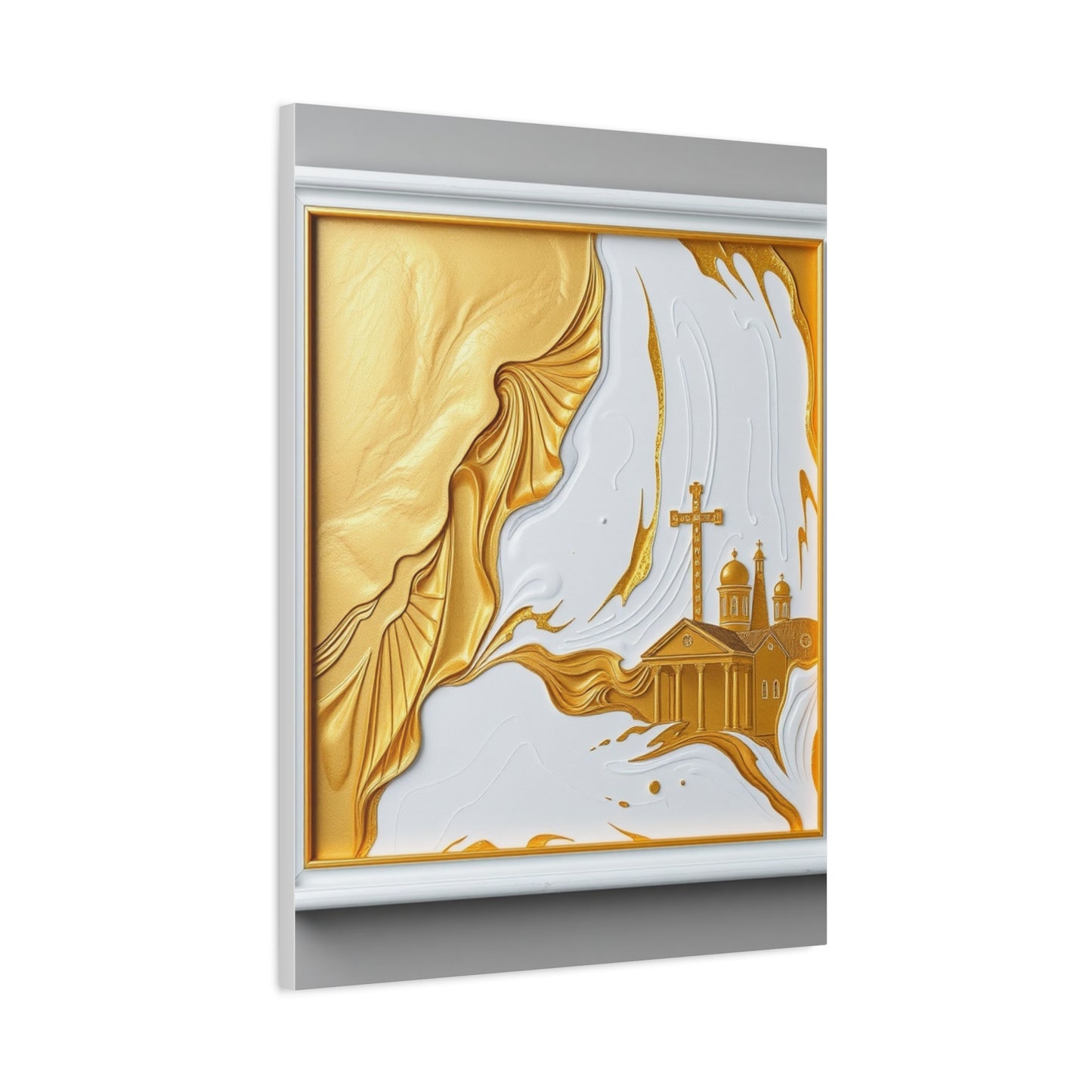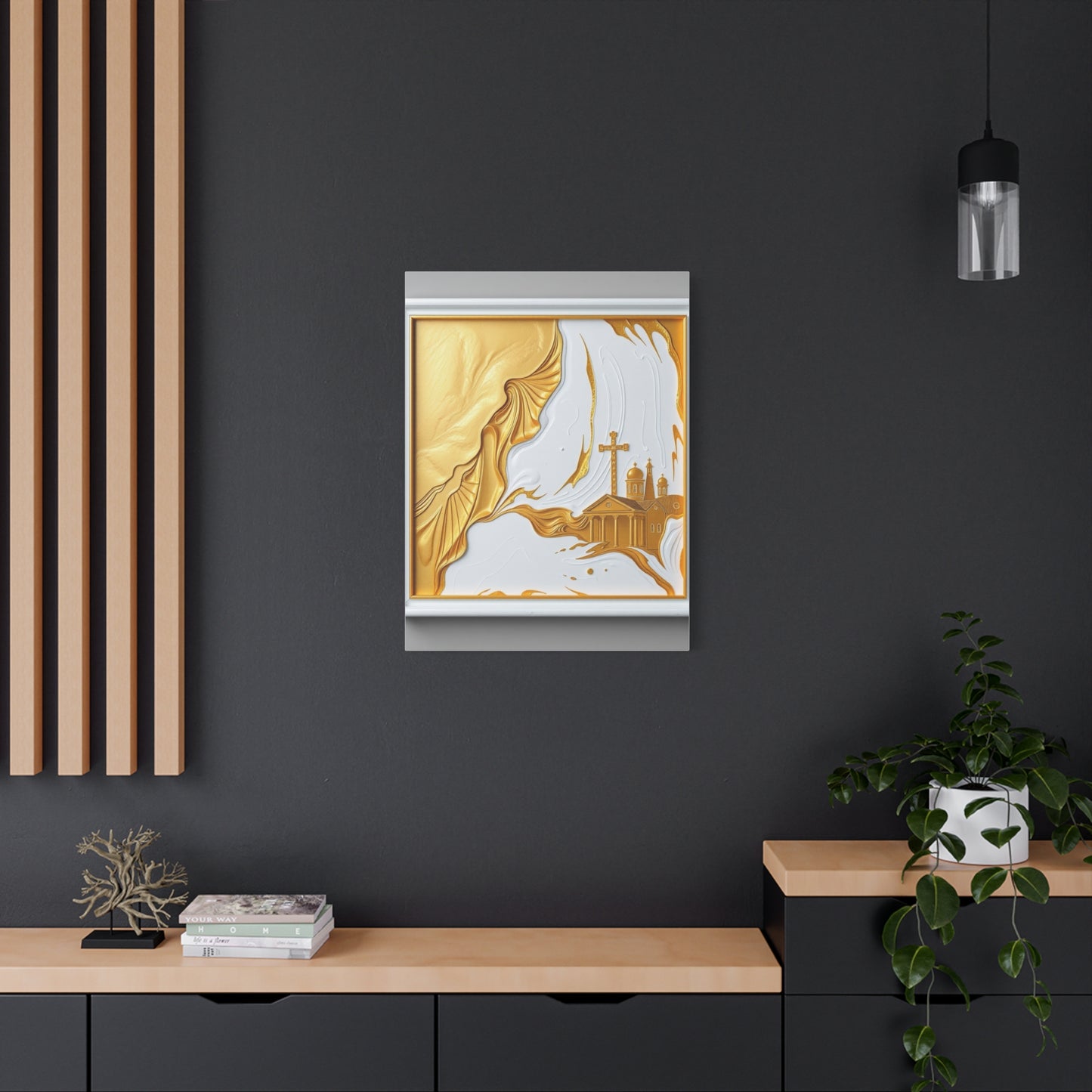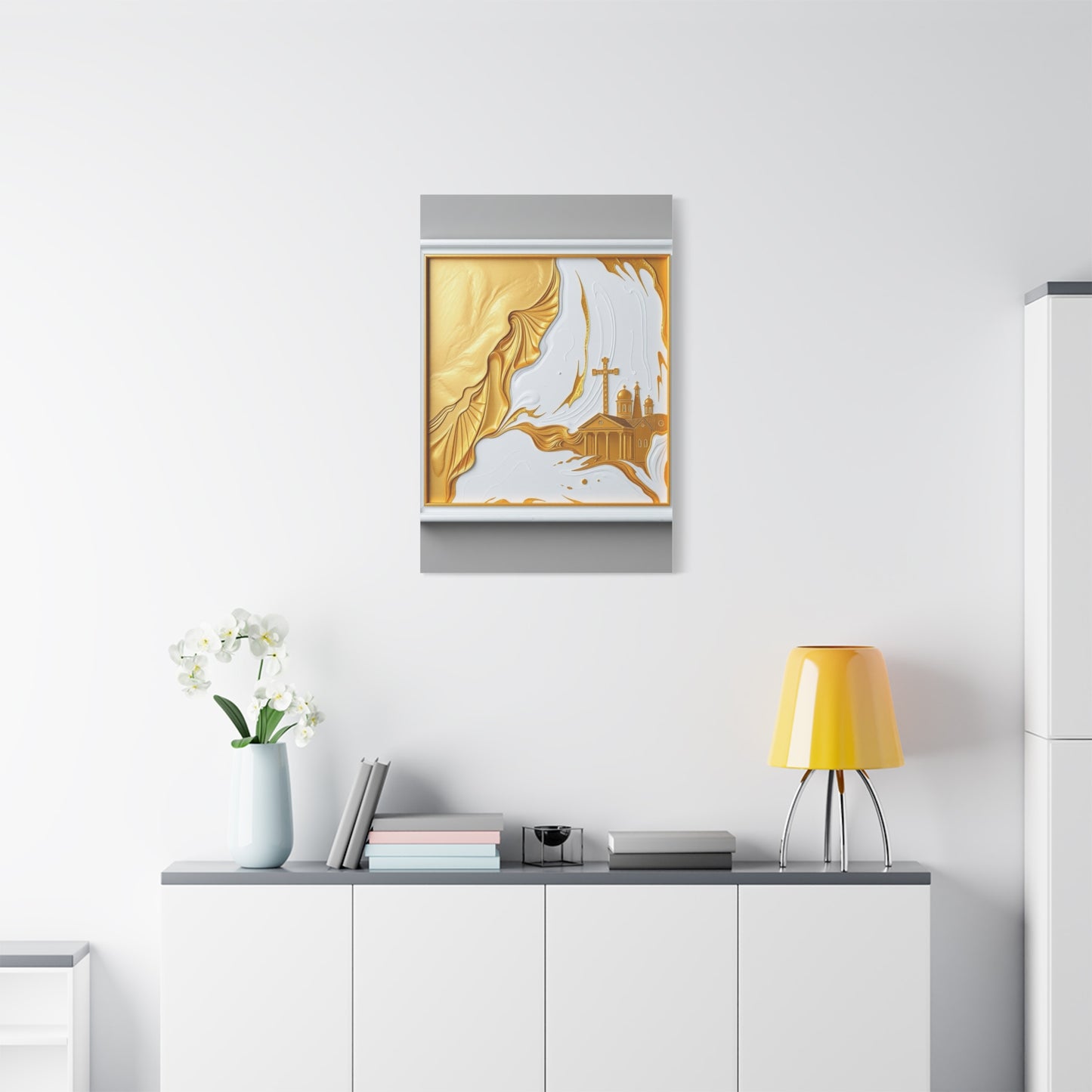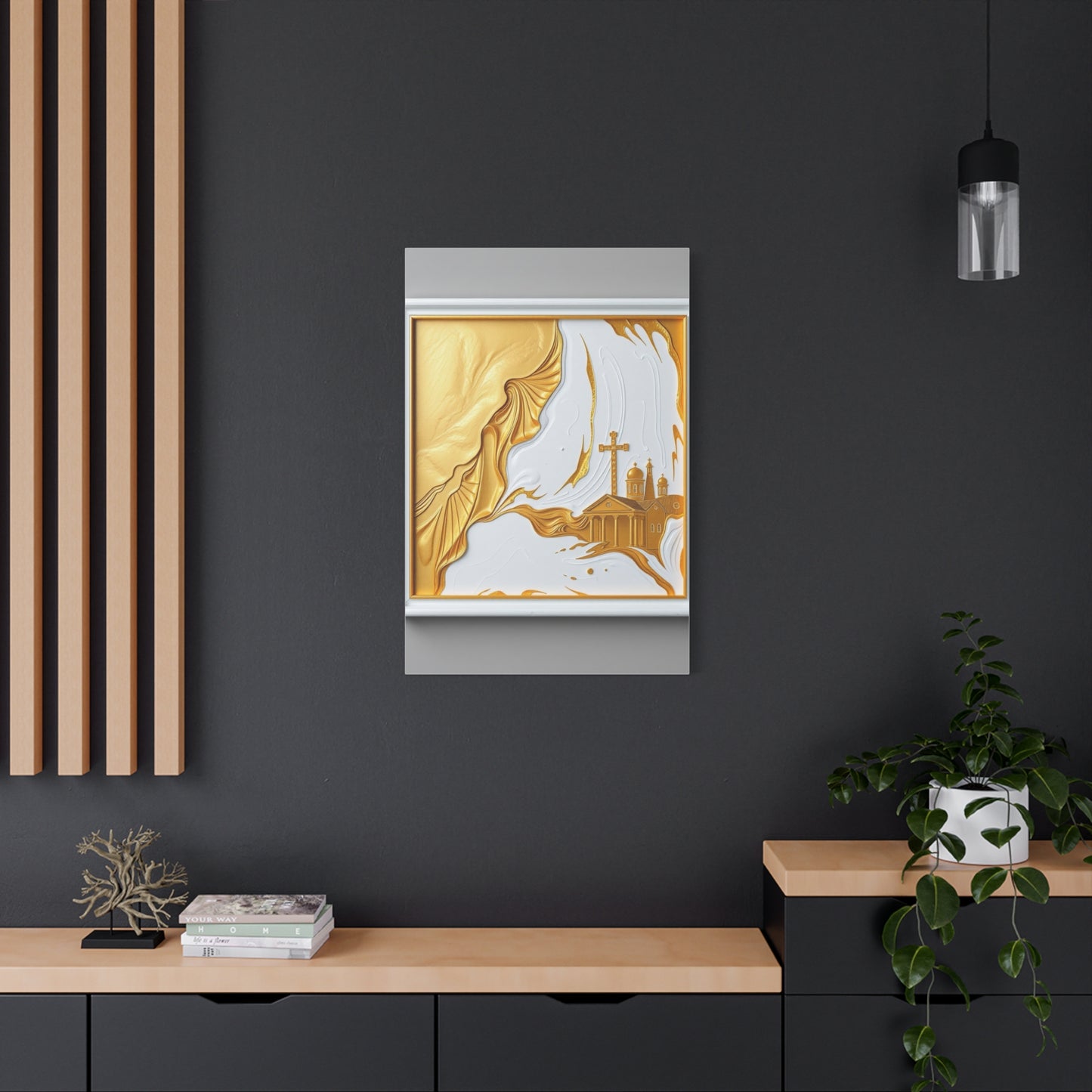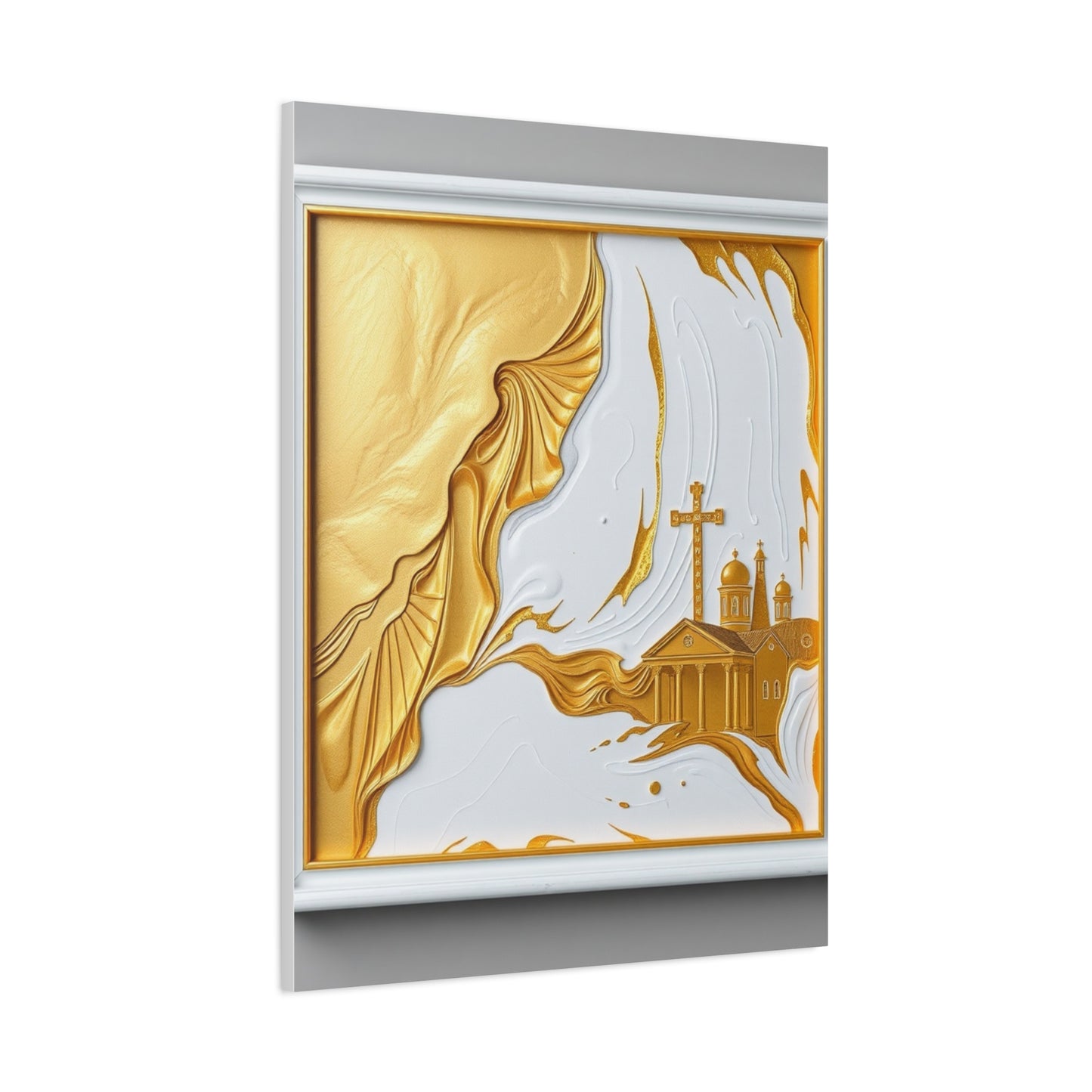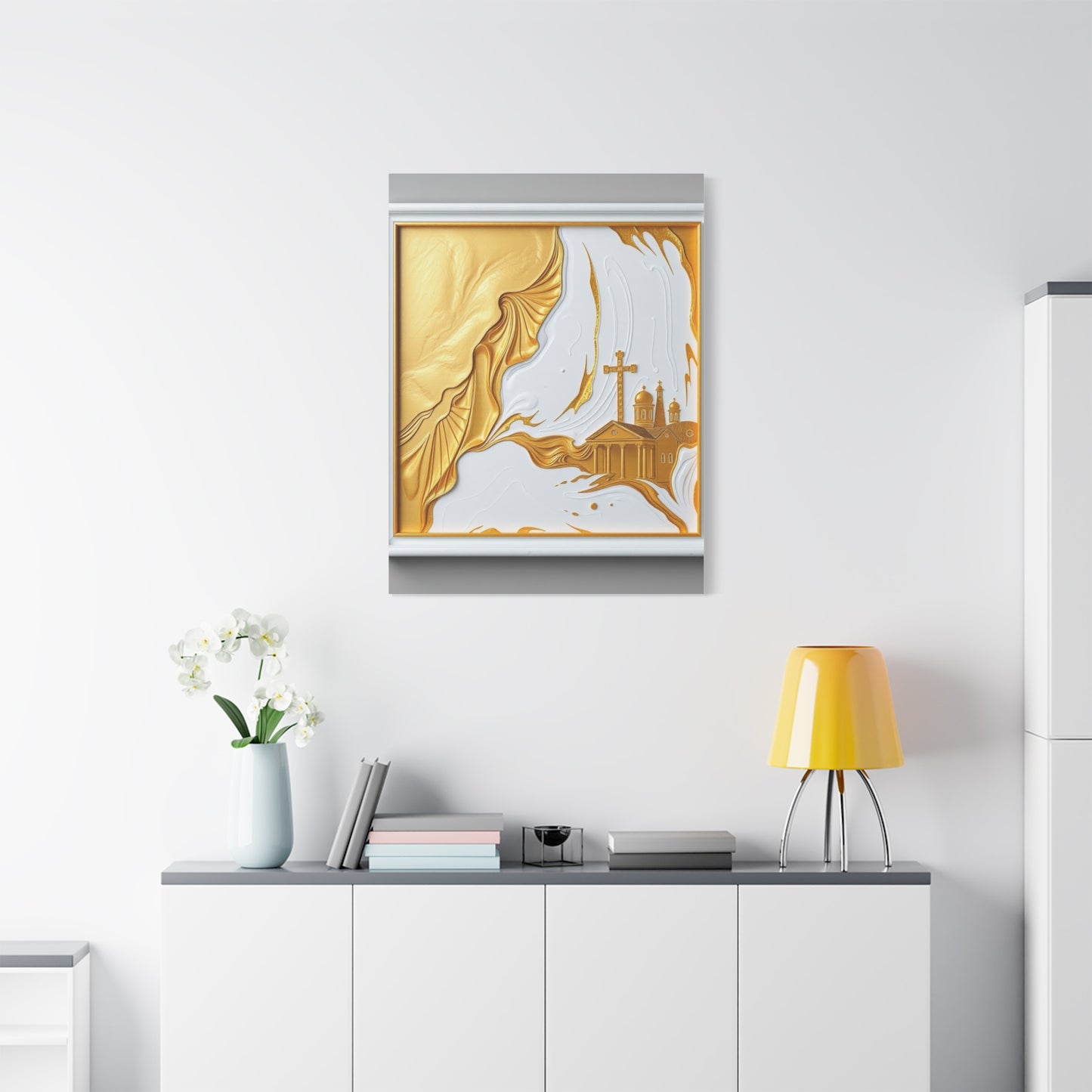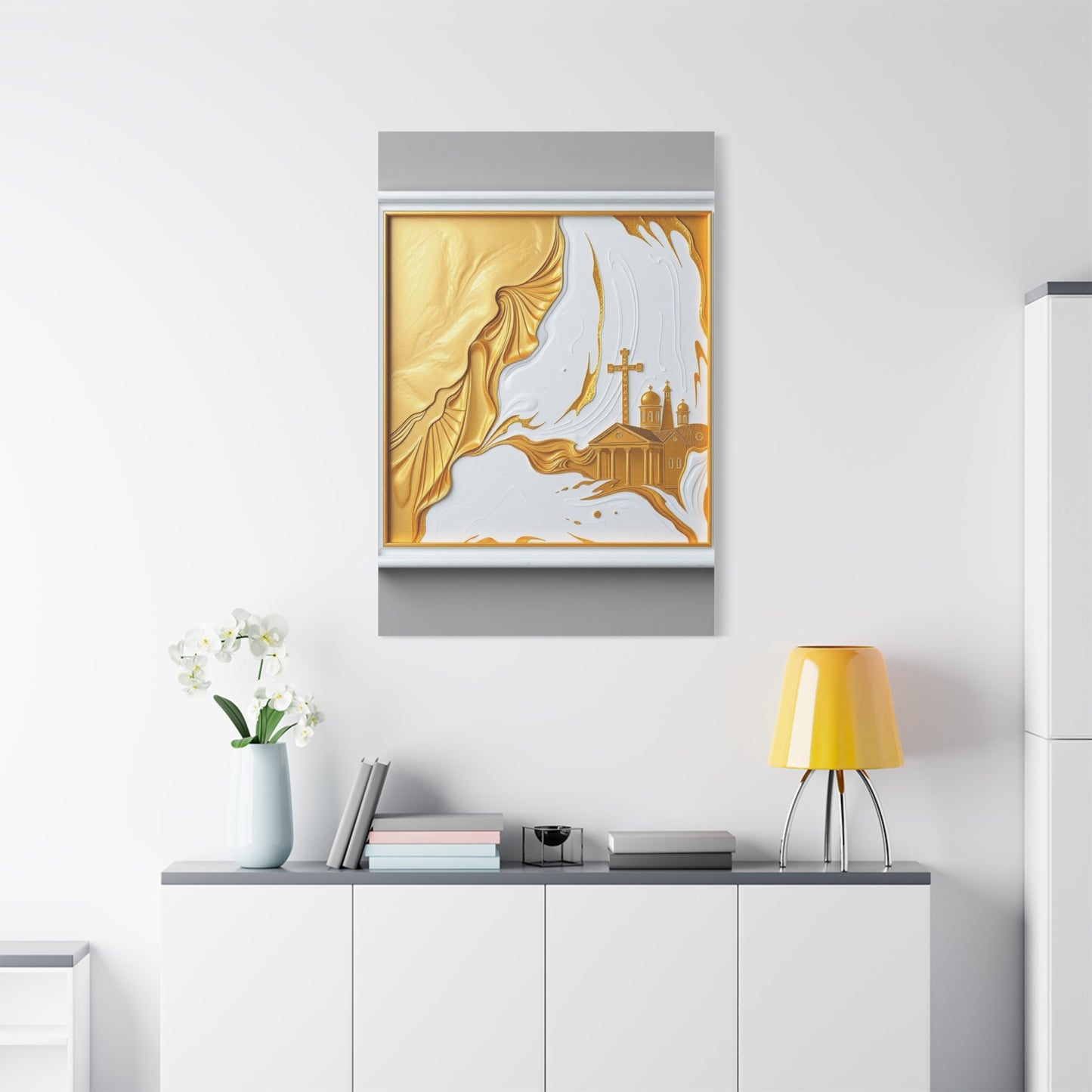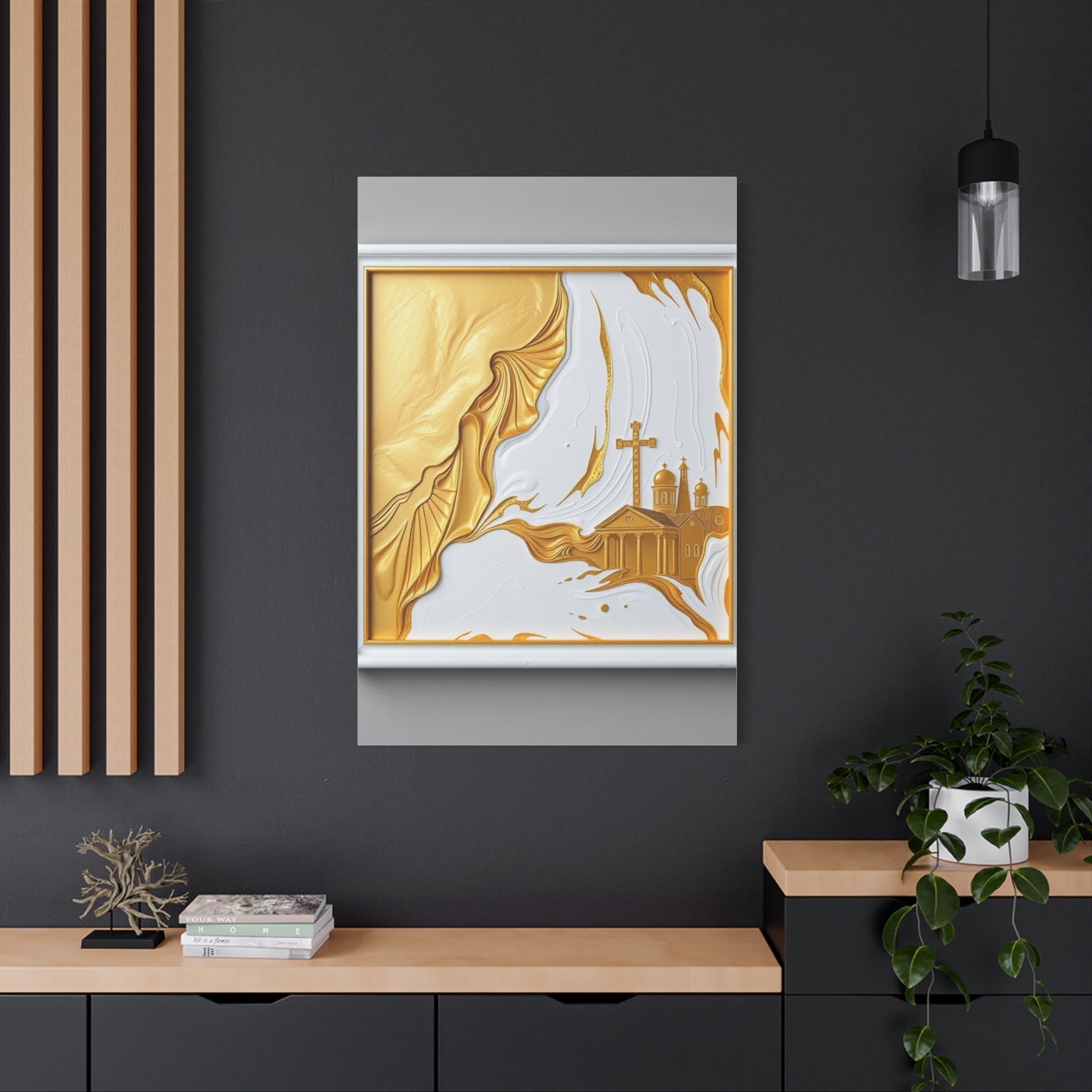Sublime Radiance: The Regal Blanc Brilliance Wall Art Collection
The world of home decoration has witnessed a remarkable shift toward minimalistic yet sophisticated aesthetics, with Regal Blanc wall art emerging as a defining element in contemporary living environments. This artistic movement celebrates the purity and magnificence of white-themed visual expressions, creating environments that breathe sophistication while maintaining an air of serene tranquility. The concept of Regal Blanc transcends traditional decorative approaches, offering homeowners and design enthusiasts an opportunity to transform their living environments into galleries of refined taste and artistic excellence.
The allure of white-themed artistic expressions lies in their ability to create visual harmony while serving as a foundation for various decorative elements throughout any room. When carefully curated and strategically placed, these luminous creations become conversation starters that reflect the inhabitant's appreciation for artistic refinement and contemporary aesthetics. The versatility of such artistic pieces allows them to complement virtually any existing decor scheme while adding layers of visual depth and emotional resonance to the environment.
Contemporary homeowners increasingly recognize the transformative power of thoughtfully selected artistic pieces that emphasize brightness, clarity, and elegance. The movement toward cleaner, more refined aesthetic choices reflects a broader cultural shift toward mindful living and intentional decoration. This approach to home enhancement goes beyond mere decoration; it represents a lifestyle choice that values quality, sophistication, and artistic integrity above fleeting trends or ostentatious displays.
The Evolution of White-Themed Artistic Expression
The historical journey of white-themed artistic expression reveals fascinating insights into how cultures across different periods have interpreted and utilized this powerful color in creative endeavors. From ancient marble sculptures that graced Roman villas to contemporary minimalist paintings that define modern galleries, white has consistently represented purity, sophistication, and timeless appeal. The evolution of these artistic expressions demonstrates humanity's enduring fascination with the symbolic and aesthetic power of pristine, unblemished surfaces.
Throughout the Renaissance period, artists began exploring the dramatic potential of white pigments and light-colored surfaces to create depth, contrast, and emotional resonance in their works. Master painters discovered that strategic use of white elements could draw attention to specific focal points while creating atmospheric effects that enhanced the overall impact of their compositions. This historical foundation laid the groundwork for contemporary artists who continue to explore the expressive possibilities inherent in white-themed artistic creations.
The modern interpretation of white-themed art has evolved significantly from its classical origins, incorporating innovative techniques, materials, and conceptual approaches that reflect contemporary sensibilities. Today's artists working within this aesthetic framework employ diverse mediums ranging from traditional canvas paintings to digital prints, sculptural elements, and mixed-media installations. This evolution demonstrates the adaptability and enduring appeal of white-themed artistic expression across different artistic movements and cultural contexts.
Contemporary galleries worldwide showcase increasing numbers of exhibitions dedicated to exploring the nuances and possibilities within white-themed artistic expression. These exhibitions often reveal the surprising complexity and emotional depth that can be achieved through seemingly simple color palettes. Critics and art enthusiasts alike have begun to recognize the sophistication required to create compelling visual narratives using predominantly white elements, acknowledging the skill and vision necessary to prevent such works from appearing bland or uninspired.
The digital age has further expanded the possibilities for creating and sharing white-themed artistic expression, with artists utilizing advanced printing technologies and online platforms to reach broader audiences. High-quality reproduction techniques now allow for faithful representation of subtle textural variations and tonal nuances that might have been lost in traditional printing processes. This technological advancement has democratized access to sophisticated artistic pieces while maintaining the integrity of the original creative vision.
Aesthetic Principles Behind Luminous Artistic Creations
The fundamental aesthetic principles governing luminous artistic creations extend far beyond simple color selection, encompassing complex relationships between light, shadow, texture, and compositional balance. Understanding these principles enables both creators and collectors to appreciate the sophisticated thought processes underlying seemingly simple white-themed compositions. The mastery of these aesthetic elements distinguishes exceptional pieces from merely decorative items, creating works that resonate on both intellectual and emotional levels.
Light manipulation represents perhaps the most crucial aspect of successful luminous artistic creation. Artists working within this genre must possess an intimate understanding of how natural and artificial light sources interact with white and near-white surfaces throughout different times of day and under various lighting conditions. This knowledge allows them to create pieces that maintain their visual impact and emotional resonance regardless of the viewing environment, ensuring consistent aesthetic appeal across diverse installation contexts.
Textural variation within predominantly white compositions requires exceptional skill and sensitivity to prevent visual monotony while maintaining overall coherence. Successful artists employ subtle gradations in surface treatment, ranging from smooth, mirror-like finishes to rough, heavily textured areas that create visual interest through their interaction with ambient light. These textural contrasts add tactile appeal to visual compositions, inviting closer examination and prolonged engagement from viewers.
The concept of negative and positive visual elements takes on heightened importance within white-themed compositions, where traditional color-based contrast techniques may not be applicable. Artists must rely on form, line, and spatial relationships to create dynamic visual tension and guide the viewer's eye through the composition. This requires a sophisticated understanding of visual psychology and the ability to create compelling narratives through purely formal elements rather than relying on color-based emotional associations.
Proportional relationships within luminous compositions demand careful consideration to achieve optimal visual balance and aesthetic impact. The scale relationships between different elements within a piece must be precisely calibrated to create harmony while avoiding visual stagnation. This delicate balance requires extensive experience and refined aesthetic judgment, distinguishing professional-quality pieces from amateur attempts at minimalist expression.
The integration of luminous artistic pieces within existing environmental contexts requires consideration of architectural elements, furniture placement, and overall room proportions. Successful integration depends on understanding how white-themed pieces interact with surrounding colors, textures, and lighting conditions to create cohesive aesthetic experiences. This holistic approach ensures that artistic additions enhance rather than compete with existing decorative elements.
Contemporary Applications in Home Decoration
Modern homeowners have embraced white-themed artistic pieces as versatile decorative elements that can enhance virtually any living environment while maintaining compatibility with evolving design preferences. The adaptability of these pieces makes them particularly valuable investments for those who appreciate the flexibility to modify their decorative schemes without requiring complete artistic overhauls. This practical consideration, combined with their inherent aesthetic appeal, has contributed to the growing popularity of luminous artistic expressions in residential contexts.
Living rooms benefit tremendously from the strategic placement of well-chosen white-themed pieces that can serve as focal points while maintaining visual harmony with existing furniture and architectural elements. Large-scale pieces positioned above seating areas create dramatic visual anchors that draw attention while providing conversation starters for social gatherings. The neutral nature of these pieces allows homeowners to experiment with colorful accessories and textiles without creating visual conflicts or overwhelming the sensory experience.
Bedroom environments particularly benefit from the calming influence of luminous artistic expressions, which contribute to creating restful, serene atmospheres conducive to relaxation and peaceful sleep. The psychological associations with cleanliness, purity, and tranquility inherent in white-themed pieces make them ideal choices for personal retreat areas where stress reduction and mental clarity are prioritized. Strategic placement of such pieces can enhance natural light distribution throughout sleeping areas while creating visually appealing focal points.
Kitchen and dining areas present unique opportunities for incorporating white-themed artistic elements that complement the functional requirements of these spaces while adding aesthetic sophistication. The clean, hygienic associations of white tones align naturally with food preparation and dining environments, while the artistic elements elevate these utilitarian areas into more refined, restaurant-quality experiences. Properly selected pieces can bridge the gap between functional necessity and aesthetic aspiration in these heavily used domestic areas.
Bathroom environments, often overlooked in artistic decoration schemes, can be dramatically enhanced through thoughtful integration of moisture-resistant white-themed pieces. The spa-like associations created by such artistic elements contribute to transforming routine personal care activities into more luxurious, hotel-inspired experiences. The practical benefits of choosing pieces that complement existing tile work and fixtures while providing visual interest make this application particularly appealing to homeowners seeking comprehensive aesthetic coordination.
Home office and study areas benefit from the mental clarity and focus-enhancing properties associated with clean, uncluttered visual environments. White-themed artistic pieces contribute to creating professional, sophisticated work environments that inspire productivity while maintaining visual appeal during video conferences and client meetings. The timeless nature of such pieces ensures that home office areas maintain their professional appearance regardless of changing business trends or technological updates.
Psychological Impact and Emotional Resonance
The psychological effects of white-themed artistic expressions extend far beyond simple aesthetic appreciation, influencing mood, cognitive function, and overall emotional well-being in measurable ways. Research in environmental psychology has consistently demonstrated the powerful impact of color and visual composition on human behavior and mental states. Understanding these psychological mechanisms enables more informed decisions about artistic selection and placement within living environments.
The association between white tones and mental clarity has deep cultural and evolutionary roots that influence contemporary responses to luminous artistic expressions. These associations tap into fundamental human responses to light, cleanliness, and order that have developed over millennia of evolution. Modern neuroscience research supports these intuitive connections, demonstrating measurable changes in brain activity when individuals are exposed to predominantly white visual environments compared to more complex or darker color schemes.
Stress reduction represents one of the most significant psychological benefits associated with white-themed artistic environments. The simplicity and elegance inherent in well-designed luminous pieces can help counteract the visual overstimulation common in contemporary urban environments. This calming effect extends beyond immediate visual perception, influencing broader patterns of thought and emotional regulation that contribute to overall mental health and well-being.
The meditative qualities inherent in contemplating subtle variations within predominantly white compositions can facilitate mindfulness practices and promote present-moment awareness. These pieces often reward sustained observation, revealing layers of complexity and nuance that may not be immediately apparent to casual viewers. This characteristic makes them particularly valuable for individuals seeking to develop greater appreciation for subtlety and refinement in their aesthetic experiences.
Cultural associations with purity, renewal, and fresh beginnings contribute to the positive emotional responses frequently generated by white-themed artistic expressions. These associations can be particularly powerful during periods of personal transition or environmental change, providing symbolic support for new beginnings and positive transformation. The universal nature of these associations makes such pieces appealing across diverse cultural backgrounds and personal histories.
The relationship between luminous artistic expressions and perceived environmental quality influences inhabitants' overall satisfaction with their living situations. Research indicates that individuals living in environments featuring high-quality artistic pieces report greater satisfaction with their homes and enhanced sense of personal accomplishment. These findings suggest that investing in quality artistic pieces can contribute to long-term happiness and life satisfaction beyond their immediate aesthetic benefits.
Technical Aspects of Creation and Production
The technical mastery required for creating compelling white-themed artistic expressions demands sophisticated understanding of materials, techniques, and production processes that differ significantly from traditional colorful compositions. Artists working within this aesthetic framework must develop specialized skills in managing subtle tonal variations, textural relationships, and surface treatments that create visual interest without relying on bold color contrasts. This technical complexity explains why exceptional pieces within this genre command respect and premium pricing in contemporary art markets.
Canvas preparation for white-themed compositions requires meticulous attention to surface quality and primer selection that may not be necessary for works incorporating darker or more forgiving color palettes. The pristine nature of the intended final product demands flawless foundational work that will not compromise the purity of subsequent applications. Professional artists often invest considerable time and resources in perfecting their surface preparation techniques to ensure consistent results across multiple pieces.
Pigment selection for luminous compositions involves understanding subtle differences between various white formulations and their behavior under different lighting conditions and aging processes. Professional-grade titanium white differs significantly from zinc white or lead white in terms of opacity, longevity, and interaction with other pigments. These technical considerations influence both the immediate appearance and long-term stability of finished pieces, making expert knowledge essential for creating investment-quality works.
Digital reproduction techniques for white-themed pieces require specialized calibration and printing processes to accurately represent subtle tonal variations and textural nuances present in original works. Standard printing processes may flatten or misrepresent the sophisticated gradations that define exceptional pieces within this genre. Professional reproduction services invest in advanced equipment and color management systems specifically designed to handle these technical challenges.
Framing and presentation considerations for luminous artistic pieces often differ from those appropriate for more traditional colorful works. The selection of mounting materials, matting colors, and frame finishes requires careful consideration to avoid compromising the purity and sophistication of the primary piece. Professional framers specializing in contemporary minimalist works understand these unique requirements and can provide appropriate guidance for optimal presentation.
Conservation and maintenance requirements for white-themed pieces demand specialized knowledge and techniques to preserve their pristine appearance over time. Environmental factors such as lighting exposure, humidity levels, and air quality can significantly impact the longevity and appearance of these sensitive works. Professional conservators recommend specific handling, cleaning, and storage procedures to maintain investment value and aesthetic integrity throughout the piece's lifetime.
Material Innovation and Modern Techniques
Contemporary artists creating luminous artistic expressions benefit from access to innovative materials and techniques that were unavailable to previous generations of creators. These technological advances have expanded the possibilities for achieving sophisticated effects while improving the longevity and maintenance characteristics of finished pieces. Understanding these innovations helps collectors and enthusiasts appreciate the technical sophistication underlying contemporary white-themed artistic expressions.
Advanced acrylic formulations now offer superior opacity, longevity, and color stability compared to traditional paint systems, enabling artists to achieve previously impossible effects in luminous compositions. These modern materials resist yellowing, cracking, and fading better than their predecessors while providing enhanced workability during the creation process. The development of specialized medium additives allows artists to modify texture, drying time, and finish characteristics to achieve precisely the effects envisioned for each piece.
Digital printing technologies have revolutionized the production of high-quality reproductions and original digital works within the white-themed artistic genre. Advanced inkjet systems utilizing archival pigments can now reproduce subtle gradations and textural effects with remarkable fidelity, making sophisticated artistic expressions accessible to broader audiences. These technological capabilities have democratized access to museum-quality pieces while maintaining the integrity of original artistic visions.
Mixed-media approaches combining traditional painting techniques with contemporary materials such as metallic leaf, iridescent mediums, and textural additives have opened new possibilities for creating dynamic luminous compositions. These innovative combinations allow artists to achieve effects that would be impossible using traditional materials alone, creating pieces that change appearance under different viewing conditions and lighting angles. The integration of these materials requires specialized knowledge and technique to achieve professional results.
Three-dimensional elements incorporated into predominantly flat compositions add tactile interest and shadow play that enhances the overall visual impact of luminous pieces. Contemporary artists employ various materials including molded plastics, carved elements, and layered substrates to create relief effects that interact dynamically with ambient lighting. These techniques require understanding of both traditional sculptural principles and contemporary material properties.
Sustainable and eco-friendly material options have become increasingly important considerations for environmentally conscious artists and collectors. Modern formulations of low-VOC paints, recycled substrates, and sustainable framing materials allow for creation of luminous artistic expressions that align with contemporary environmental values. These materials often perform as well as or better than traditional alternatives while reducing environmental impact throughout the production and ownership lifecycle.
Historical Influences and Cultural Significance
The cultural significance of white-themed artistic expression extends across numerous civilizations and historical periods, reflecting universal human responses to purity, light, and transcendence that transcend specific cultural boundaries. Understanding these historical influences provides deeper appreciation for contemporary luminous artistic expressions while recognizing their connection to broader human artistic traditions. This historical context enriches the viewing experience and adds layers of meaning to seemingly simple contemporary pieces.
Ancient Greek and Roman sculptural traditions established enduring associations between white marble surfaces and classical beauty, nobility, and permanence that continue to influence contemporary aesthetic preferences. The pristine surfaces of classical sculptures represented idealized human forms and divine perfection, creating cultural connections between white tones and aspirational qualities that persist in modern artistic expression. These historical associations contribute to the elevated status of white-themed pieces in contemporary art markets and domestic decoration schemes.
Asian artistic traditions, particularly those emerging from Japanese minimalist philosophy and Chinese literati painting, have profoundly influenced contemporary approaches to luminous artistic expression. The concept of empty or negative visual elements as active compositional components derives from these traditional approaches, where what is not painted becomes as important as what is explicitly depicted. This philosophical framework provides intellectual foundation for contemporary minimalist approaches to white-themed artistic creation.
Medieval European illuminated manuscripts employed extensive white and light-colored elements to represent divine light, spiritual purity, and heavenly realms, establishing religious and spiritual associations that continue to resonate in contemporary secular contexts. These historical precedents contribute to the meditative and transcendent qualities often attributed to modern luminous artistic expressions, connecting contemporary viewers to centuries of cultural meaning-making around light and purity.
The modernist movement of the early twentieth century revolutionized approaches to white-themed artistic expression, with pioneers like Kazimir Malevich and Piet Mondrian exploring the expressive potential of simplified color palettes and geometric forms. These artistic innovations established intellectual frameworks for understanding how sophisticated artistic statements could be made through apparent visual simplicity. Their legacy continues to influence contemporary artists working within luminous aesthetic frameworks.
Contemporary global art movements have further expanded the cultural significance of white-themed artistic expression, incorporating influences from diverse cultural traditions while addressing universal themes of globalization, technology, and environmental consciousness. These contemporary interpretations demonstrate the continued relevance and adaptability of luminous artistic approaches while connecting to broader cultural conversations about identity, sustainability, and human experience in the modern world.
Investment Value and Market Considerations
The investment potential of quality white-themed artistic pieces has gained increasing recognition among collectors and art market professionals who understand the enduring appeal and market stability associated with timeless aesthetic approaches. Unlike trend-dependent artistic movements that may experience dramatic value fluctuations, luminous artistic expressions demonstrate consistent market performance due to their broad appeal and decorative versatility. This market stability makes them attractive options for both beginning collectors and sophisticated investors.
Market analysis reveals that established artists working within luminous aesthetic frameworks often command premium prices due to the technical skill and artistic vision required to create compelling pieces within apparent visual constraints. The perceived simplicity of white-themed works belies the sophisticated artistic decision-making and technical execution required for success in this demanding genre. This understanding among serious collectors contributes to sustained market demand and price appreciation for exceptional pieces.
Authentication and provenance considerations become particularly important when investing in white-themed artistic pieces due to the technical difficulty of creating convincing forgeries without access to specialized materials and techniques. Professional authentication services employ advanced analytical techniques to verify material composition, aging characteristics, and creation methods that would be difficult to replicate convincingly. This technical barrier to forgery provides additional protection for investors in legitimate pieces.
Limited edition prints and reproductions of significant white-themed works offer accessible entry points for beginning collectors while providing exposure to important artistic movements and individual artists. These pieces often appreciate in value as the reputation of featured artists grows, making them potentially profitable investments while serving decorative functions. The key to success in this market segment lies in selecting pieces by artists with strong exhibition records and critical recognition.
Resale considerations favor white-themed pieces due to their broad decorative appeal and compatibility with diverse aesthetic preferences. Unlike highly specific or controversial works that may appeal only to narrow market segments, luminous artistic expressions can attract interest from buyers across various demographic and stylistic preferences. This broad appeal contributes to market liquidity and stable resale values over time.
Professional appraisal services specializing in contemporary artistic works can provide valuable guidance for collectors seeking to understand current market values and future appreciation potential. These experts understand the subtle factors that distinguish investment-quality pieces from merely decorative items, helping collectors make informed purchasing decisions. Regular professional appraisals also facilitate insurance coverage and estate planning considerations for serious collectors.
Lighting Strategies for Optimal Display
The successful display of luminous artistic pieces depends critically on sophisticated lighting strategies that enhance rather than compromise their inherent aesthetic qualities. Unlike colorful works that may be forgiving of suboptimal lighting conditions, white-themed pieces require precisely calibrated illumination to reveal their subtle nuances and prevent visual flatness. Understanding professional lighting principles enables collectors to maximize the impact and longevity of their artistic investments.
Natural lighting considerations must account for the changing quality and intensity of sunlight throughout daily and seasonal cycles, requiring strategic placement that takes advantage of optimal conditions while protecting pieces from potentially damaging exposure. North-facing walls typically provide the most consistent natural illumination for luminous pieces, avoiding the harsh directional light and UV exposure associated with southern exposures. Window treatments may be necessary to filter and control natural light levels throughout different periods.
Artificial lighting systems designed for art display offer precise control over intensity, color temperature, and beam distribution that can dramatically enhance the visual impact of white-themed pieces. LED systems specifically designed for museum and gallery applications provide consistent color rendering while minimizing heat generation and UV emissions that could damage sensitive materials over time. Professional lighting designers can create customized systems that accommodate specific pieces and room configurations.
Track lighting systems offer flexibility for adjusting illumination angles and intensities as collections grow or room configurations change. The ability to reposition individual fixtures allows for experimentation with different lighting approaches to determine optimal presentation strategies for specific pieces. Quality track systems accommodate various fixture types and beam patterns, providing versatility for diverse artistic pieces and display requirements.
Accent lighting techniques can create dramatic visual effects that emphasize specific aspects of luminous compositions while maintaining overall visual harmony. Carefully positioned accent lights can highlight textural elements, create subtle shadow patterns, or emphasize particular areas of compositional interest. These techniques require understanding of how different lighting angles interact with surface textures and compositional elements to achieve intended effects.
Lighting control systems enable adjustment of illumination levels for different viewing conditions and time periods, protecting pieces from unnecessary exposure while ensuring optimal presentation when desired. Programmable systems can automatically adjust lighting levels based on time of day, occupancy sensors, or manual preferences. These systems contribute to energy efficiency while providing convenience and protection for valuable artistic pieces.
Creating Cohesive Aesthetic Environments
The integration of white-themed artistic pieces into broader decorative schemes requires careful consideration of color relationships, proportional balance, and stylistic harmony to create cohesive aesthetic environments that feel intentional rather than accidental. Successful integration goes beyond simply hanging pieces on walls, encompassing furniture selection, textile choices, and architectural considerations that support and enhance the artistic elements. This holistic approach ensures that artistic investments contribute meaningfully to overall environmental quality.
Color palette development for rooms featuring luminous artistic pieces typically emphasizes neutral tones and subtle variations that complement rather than compete with the primary artistic elements. The selection of paint colors, furniture finishes, and textile patterns requires understanding of how different tones interact under various lighting conditions to maintain visual harmony throughout daily cycles. Professional color consultants can provide valuable guidance for achieving sophisticated results.
Furniture selection and placement strategies must account for the visual weight and compositional requirements of featured artistic pieces to maintain proper proportional relationships within room environments. Large-scale luminous pieces may require furniture arrangements that provide adequate viewing distances and unobstructed sight lines, while smaller pieces might benefit from intimate groupings that encourage closer examination. The scale relationships between furniture and art significantly impact overall environmental success.
Textile integration offers opportunities to introduce subtle color variations and textural contrasts that enhance rather than overwhelm white-themed artistic elements. The selection of fabrics for upholstery, window treatments, and decorative accessories requires consideration of how different textures and patterns interact with the clean aesthetic of luminous pieces. High-quality natural fibers often provide appropriate textural interest while maintaining sophisticated visual coherence.
Architectural feature coordination ensures that white-themed pieces work harmoniously with existing structural elements such as moldings, built-in cabinetry, and flooring materials. The integration of artistic elements with architectural features can create seamless aesthetic experiences that feel natural and unforced. This consideration may influence decisions about frame selection, mounting methods, and positioning relative to architectural details.
Seasonal decoration strategies allow for subtle modifications to room environments that maintain focus on primary artistic pieces while acknowledging changing preferences and occasions. The neutral nature of luminous artistic expressions makes them compatible with various seasonal accents and temporary decorative elements without compromising overall aesthetic integrity. This flexibility adds practical value to artistic investments while maintaining visual interest throughout the year.
Maintenance and Preservation Techniques
Proper maintenance and preservation of white-themed artistic pieces requires specialized knowledge and techniques that differ significantly from general housekeeping practices or maintenance requirements for darker, more forgiving artistic works. The pristine nature of luminous compositions makes them particularly susceptible to environmental contamination, handling damage, and aging effects that might be barely noticeable on other types of artistic pieces. Understanding professional preservation techniques helps protect artistic investments while maintaining their aesthetic impact over time.
Environmental control represents the most critical factor in long-term preservation of white-themed artistic pieces, requiring attention to temperature stability, humidity levels, air quality, and UV exposure that exceeds typical residential comfort considerations. Professional conservation standards recommend maintaining temperatures between 65-70 degrees Fahrenheit with humidity levels between 45-55 percent to minimize expansion and contraction cycles that can damage substrates and paint layers. Air filtration systems can reduce particulate contamination that is particularly visible on light-colored surfaces.
Cleaning protocols for luminous artistic pieces must be adapted to the specific materials and techniques used in creation, requiring understanding of how different cleaning agents and methods interact with various paint formulations and substrate materials. Professional conservators typically recommend dry cleaning methods using soft brushes and microfiber cloths rather than liquid cleaners that might leave residues or cause staining. Regular professional cleaning assessments can identify maintenance needs before they become serious conservation problems.
Handling procedures for moving or adjusting white-themed pieces require special precautions to prevent fingerprints, pressure marks, and other contact damage that would be immediately visible on pristine surfaces. Professional handling techniques include wearing clean cotton gloves, supporting pieces from structural frames rather than surface areas, and using appropriate lifting and transport equipment for larger works. Proper handling education for household members and service providers prevents accidental damage during routine maintenance activities.
Storage requirements for pieces not currently displayed must account for the sensitivity of white surfaces to contact staining and environmental contamination during extended periods. Professional storage solutions include acid-free interleaving materials, climate-controlled environments, and protective enclosures that prevent direct contact with potentially damaging materials. Proper storage preparation ensures that pieces remain in exhibition condition when returned to display.
Professional conservation services provide specialized treatments for addressing age-related changes, accidental damage, or environmental effects that exceed routine maintenance capabilities. Early intervention by qualified professionals can often prevent minor problems from developing into major conservation challenges that might compromise artistic integrity or investment value. Establishing relationships with qualified conservators before problems develop ensures rapid response when professional intervention becomes necessary.
Future Trends and Emerging Directions
The evolution of white-themed artistic expression continues to accelerate with the introduction of new technologies, materials, and cultural influences that expand creative possibilities while maintaining connection to traditional aesthetic principles. Understanding emerging trends helps collectors and enthusiasts anticipate future developments while making informed decisions about current acquisitions. These trends reflect broader cultural movements toward sustainability, technological integration, and global cultural exchange that influence artistic expression across all genres.
Digital integration represents one of the most significant emerging trends in luminous artistic creation, with artists experimenting with interactive elements, programmable lighting, and augmented reality components that enhance traditional static compositions. These technological integrations can create dynamic pieces that respond to environmental conditions, viewer presence, or programmed sequences while maintaining the essential aesthetic qualities of white-themed expression. The challenge lies in integrating technology seamlessly without compromising artistic integrity.
Sustainable materials and production methods are becoming increasingly important considerations for environmentally conscious artists and collectors seeking to align artistic choices with broader ecological values. Innovations in bio-based pigments, recycled substrates, and low-impact production techniques enable creation of luminous artistic expressions that minimize environmental footprint while maintaining quality and longevity standards. These developments reflect growing awareness of environmental responsibility within artistic communities.
Cultural fusion approaches incorporate elements from diverse global traditions while maintaining the essential characteristics of luminous artistic expression, creating pieces that speak to increasingly multicultural audiences while respecting traditional aesthetic principles. These cross-cultural influences enrich the visual vocabulary available to contemporary artists while expanding the cultural relevance and market appeal of white-themed pieces. The challenge involves maintaining aesthetic coherence while incorporating diverse cultural elements meaningfully.
Scale experimentation explores the possibilities of both extremely large-scale installations and intricate small-scale compositions that push the boundaries of traditional white-themed artistic expression. Large-scale pieces designed for architectural integration offer opportunities for creating immersive environments, while miniature works explore the possibilities of intimate viewing experiences. These scale explorations expand the potential applications and market segments for luminous artistic expressions.
Collaborative creation processes involving multiple artists, technologists, and cultural experts are producing increasingly sophisticated white-themed pieces that combine diverse expertise and perspectives. These collaborative approaches can achieve technical and conceptual complexity that might be beyond individual artists while creating pieces that reflect contemporary values of cooperation and cultural exchange. The management of collaborative processes requires new approaches to artistic authorship and intellectual property considerations.
Professional Guidance and Expert Consultation
Navigating the complexities of selecting, acquiring, and maintaining quality white-themed artistic pieces often benefits from professional guidance that can help avoid costly mistakes while ensuring optimal results from artistic investments. Various types of experts bring specialized knowledge and experience that complement personal aesthetic preferences with technical expertise and market awareness. Understanding when and how to engage professional services contributes to successful artistic collecting and environmental enhancement.
Art consultants specializing in contemporary minimalist and white-themed expressions provide valuable guidance for identifying pieces that align with personal preferences, budget constraints, and decorative requirements. These professionals maintain extensive knowledge of emerging artists, market trends, and availability of significant pieces that might not be widely advertised. Their expertise in evaluating artistic quality and investment potential can help collectors make informed decisions while avoiding common pitfalls.
Interior design professionals with experience in integrating artistic pieces into residential environments bring valuable perspective on how luminous expressions interact with architectural features, furniture selections, and lighting conditions. These experts understand the practical considerations of creating cohesive aesthetic environments while maximizing the impact of featured artistic pieces. Their services often prove invaluable for achieving professional-quality results in residential applications.
Professional framers specializing in contemporary artistic works provide essential services for optimizing the presentation and preservation of white-themed pieces. Their expertise in selecting appropriate materials, techniques, and presentation methods can significantly impact both the immediate visual appeal and long-term preservation of artistic investments. The specialized knowledge required for handling minimalist pieces makes professional framing services particularly valuable for this genre.
Lighting designers with experience in art display applications can create customized illumination strategies that reveal the subtle qualities of luminous pieces while protecting them from potentially damaging exposure. Their understanding of how different lighting approaches interact with white surfaces and textural elements enables optimal presentation under various viewing conditions. Professional lighting design often proves essential for maximizing the impact of significant artistic investments.
Conservation professionals provide essential services for maintaining the pristine condition of white-themed pieces over time, offering both preventive maintenance guidance and corrective treatments when necessary. Their specialized knowledge of material behavior, aging processes, and treatment options helps protect artistic investments while maintaining aesthetic integrity. Establishing relationships with qualified conservators before problems develop ensures optimal care throughout the ownership period.
Conclusion:
The realm of Regal Blanc wall art represents a sophisticated intersection of artistic excellence, technical mastery, and timeless aesthetic appeal that continues to evolve while maintaining its fundamental connection to principles of purity, elegance, and refined taste. Throughout this comprehensive exploration, we have examined the multifaceted nature of white-themed artistic expression, from its historical foundations to contemporary innovations, revealing the depth and complexity underlying what might initially appear to be simple aesthetic choices.
The psychological and emotional benefits associated with luminous artistic expressions extend far beyond mere decoration, contributing to enhanced well-being, mental clarity, and environmental satisfaction that justify their consideration as meaningful lifestyle investments rather than superficial purchases. The scientific understanding of how these pieces influence mood, cognitive function, and stress levels provides compelling evidence for their value in creating healthier, more supportive living environments that nurture both physical comfort and emotional well-being.
The technical sophistication required for creating exceptional white-themed pieces demands respect for the artists who master these challenging aesthetic territories while pushing creative boundaries through innovative materials, techniques, and conceptual approaches. This technical complexity, combined with the universal appeal and decorative versatility of luminous expressions, contributes to their stability as investment vehicles and their enduring presence in sophisticated decorative schemes worldwide.
The integration of professional guidance throughout the selection, acquisition, installation, and maintenance processes ensures optimal results from artistic investments while protecting both aesthetic impact and financial value over time. The specialized knowledge required for working successfully with white-themed pieces makes professional consultation particularly valuable for achieving museum-quality results in residential applications while avoiding common mistakes that might compromise artistic integrity.
Looking toward future developments in this artistic genre, the integration of sustainable materials, digital technologies, and cross-cultural influences promises continued evolution while maintaining connection to fundamental aesthetic principles that have sustained appeal across centuries of human artistic expression. These emerging trends offer exciting possibilities for both creators and collectors while expanding the cultural relevance and market appeal of luminous artistic expressions.
The investment potential of quality white-themed pieces reflects both their intrinsic artistic merit and their practical advantages in terms of broad market appeal, decorative versatility, and resistance to stylistic obsolescence that can affect more trend-dependent artistic movements. This combination of aesthetic excellence and practical considerations makes them attractive options for collectors seeking to balance artistic appreciation with financial prudence.
The creation of cohesive aesthetic environments incorporating luminous artistic expressions requires understanding of complex relationships between color, proportion, lighting, and cultural context that reward careful planning and professional guidance. The successful integration of these pieces into broader decorative schemes demonstrates their potential to serve as foundation elements for sophisticated, personally meaningful living environments that reflect contemporary values while maintaining timeless appeal.
As we conclude this comprehensive examination of Regal Blanc wall art and its significance within contemporary artistic expression, it becomes clear that these luminous creations offer far more than simple decoration. They represent opportunities for personal expression, environmental enhancement, cultural participation, and investment that align with broader values of quality, sustainability, and aesthetic excellence that characterize thoughtful approaches to modern living.
The enduring appeal of white-themed artistic expression across diverse cultures and historical periods demonstrates its connection to fundamental human responses to beauty, purity, and transcendence that transcend specific cultural boundaries or temporal limitations. This universal resonance ensures continued relevance and market appeal while providing collectors with confidence in the lasting value of their artistic investments.
Whether approached from perspectives of aesthetic appreciation, psychological well-being, investment potential, or cultural participation, Regal Blanc wall art offers compelling benefits that justify serious consideration by anyone seeking to enhance their living environment through thoughtful artistic selection. The sophisticated nature of exceptional pieces within this genre rewards careful study and appreciation while providing lasting satisfaction that extends well beyond initial acquisition excitement.

















